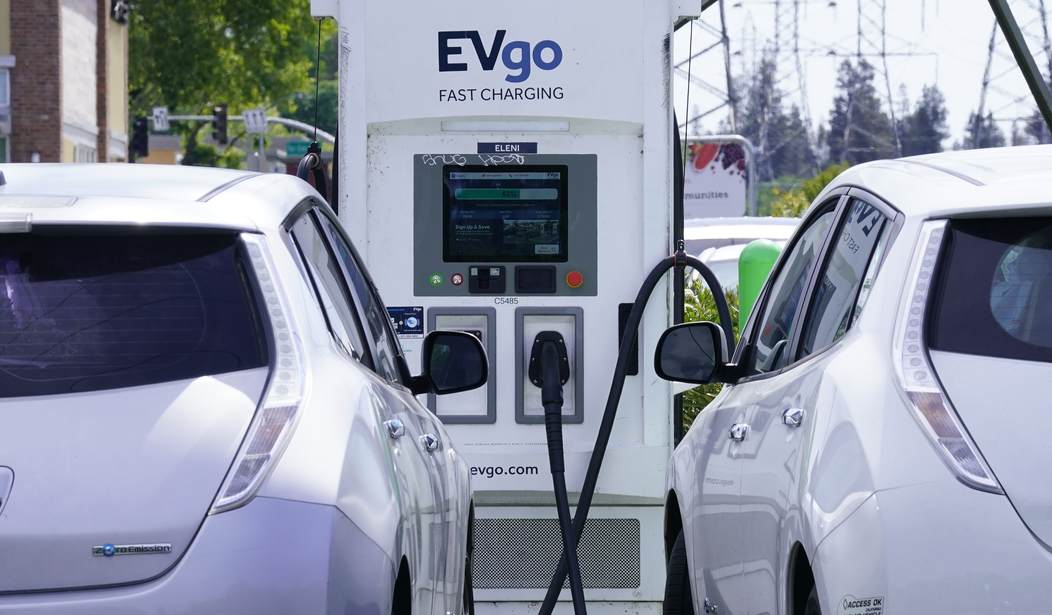Electric cars are the future of transportation, so we're told. They better be. Biden got Congress to appropriate several hundred billion dollars in subsidies to consumers and car makers, and $7.5 billion to set up thousands of EV chargers across the country.
If you own a Tesla, you're probably not worried about charging your vehicle. Tesla has set up a large network of charging stations that are well-maintained and relatively inexpensive to operate (Tesla says it costs $47 a month to charge their vehicles.).
But if you have any other brand of electric vehicle, you're SOL, pal. Depending on where you live, you might have great difficulty in finding a fast EV power station that's 1) in service; and 2) will accept your credit or debit card. There's also an issue with a "failed handshake" between the car and charger, but that affects relatively few power stations.
The big issue is the reliability of these charging stations. They're supposed to be maintained by the company that installed them. In Los Angeles, there are three companies that have installed and are supposed to maintain the fast EV chargers, according to Wall Street Journal reporter Joanna Stern.
L.A. County has more public DC fast chargers than any other in the country, according to the Atlas Public Policy research group. From the beach in Santa Monica to parking garages under Rodeo Drive, my video producer Adam Falk and I visited 30 different non-Tesla DC fast-charger stations in a Rivian R1T pickup. I ran into problems at 13 of them—that’s over 40%. Oof is right.
EVgo, Electrify America, and EVCS are the three companies in the Los Angeles area that are supposed to maintain the fast chargers.
Of the 126 stalls I inspected, 27% were out of order. They either had a sign, a dead screen or an error reading “Charger unavailable” or “Out of service.”
All the companies told me they have network operators monitoring the chargers 24/7. When a problem pops up, they deploy technicians to assess and fix the issue. So what was wrong with these particular machines? It could be one of many things—a broken part, a power issue, a defective connector.
Anthony Lambkin, Electrify America’s vice president of operations, told me power issues can be the reason a charger is off. Operators also sometimes make chargers unavailable when they have repeated problems.
Grid reliability is likely to be a huge issue in the coming years. Imagine getting all dressed up for a night on the town and then being forced to go home when the EV chargers are down due to rationing of electricity. EV chargers are close to being last in line as far as grid priorities are concerned.
"We’re in the process right now of either upgrading, decommissioning or replacing stalls that are legacy equipment and that no longer meet our standards for reliability and customer experience,” Sara Rafalson, a senior vice president at EVgo, told Stern.
That's good news but the issue isn't replacing old chargers, it's maintaining the chargers already installed. The chargers apparently don't last as long as gas pumps.
There are also credit card issues with the EV stations.
Nearly 10% of the working stalls visited had payment issues. Swipe. Error. Chip reader. Error. Try another card. Error.
Why do these machines hate credit cards? Again, a few reasons. Karim Farhat, the chief commercial officer at EVCS, said the makers of the charging hardware and the credit-card reader machines are often different, so there can be integration problems.
Rafalson of EVgo pointed the finger at the state-mandated chip readers. The newest standards require more dependable contactless card readers.
There are a lot more issues with electric vehicles than charging stations that don't work and credit card readers that can't read. Right now, we're several hundred thousand charging stations short of where we need to be by 2030. And the aforementioned electric grid isn't prepared to handle 40 million EVs needing charges by 2030.
I've asked this question before: didn't they think of these things before investing half a trillion dollars in this cockamamie scheme?










Join the conversation as a VIP Member